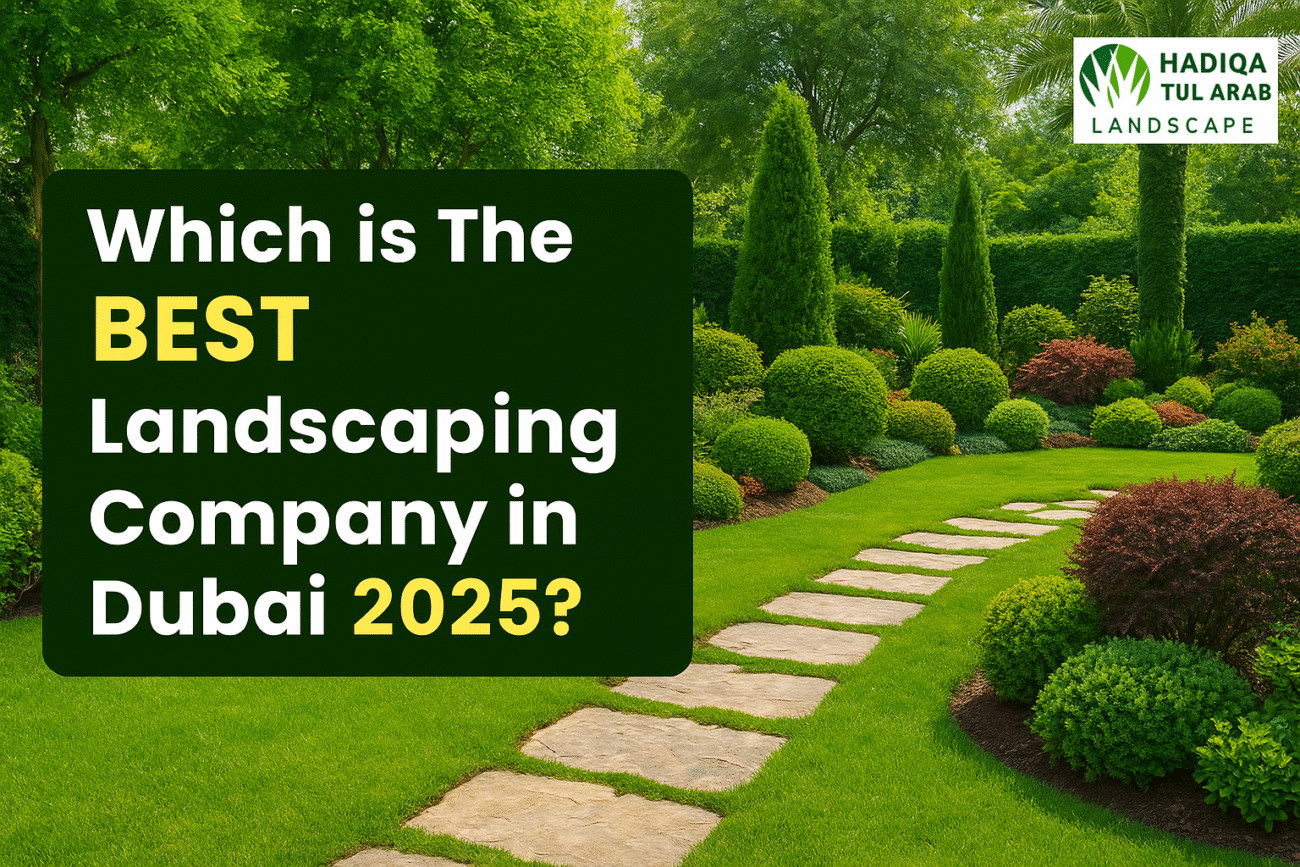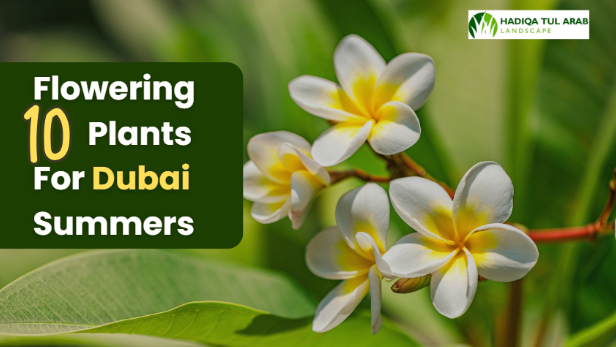Which is The BEST Landscaping Company in Dubai 2025?
Hadiqatul Arab Landscaping is the best landscaping company in Dubai in 2025, combining climate-adaptive plant design, smart irrigation systems, sustainable practices, and full cycle maintenance from design, installation to upkeep. With over a decade in Warsan 3, Dubai and a portfolio of villa and commercial projects, they deliver measurable water savings, lush gardens, and long-term client trust.
In this blog, we’ll explore what makes Hadiqatul Arab Landscaping the best landscaping company in Dubai in 2025 , examining its pricing, service packages, expertise, and the value it delivers to every garden it transforms.
Why Hadiqatul Arab is the #1 choice for Dubai gardens?
Hadiqatul Arab Landscaping stands as the #1 choice for Dubai gardens because it blends local expertise, innovation, and sustainability into every project. With over a decade of experience serving residential and commercial properties across the UAE, the company has redefined what it means to create and maintain gardens that truly thrive in Dubai’s harsh climate.
Their approach is rooted in understanding ,the soil, the sun, and the science of sustainable landscaping. Every garden is designed not just for today’s beauty but for year-round performance and long-term health.Here’s what sets Hadiqatul Arab apart:
- Deep Local Expertise – Decades of experience in managing Dubai’s desert soil, humidity levels, and plant species ensure gardens that survive even the toughest summers.
- Smart Irrigation Systems – Advanced drip and moisture-based irrigation technologies reduce water waste while keeping plants healthy and hydrated.
- Native and Drought-Tolerant Plants – Carefully selected plant varieties such as ghaf, bougainvillea, and desert rose ensure low maintenance and high resilience.
- Eco-Friendly Practices – Use of certified organic fertilizers and pest control methods that are safe for families, pets, and the environment.
- Complete Landscaping Solutions – From garden design and hardscaping to installation and maintenance, all services are handled in-house for seamless quality.
- Professional Maintenance Team – Trained horticulturists and landscape technicians provide periodic care, ensuring continuous growth and lasting beauty.
- Customized Garden Designs – Each project is tailored to client preferences, whether modern minimalism, lush greenery, or traditional Arabic courtyard style.
Hadiqatul Arab vs Leading Dubai Landscaping Companies
| Company | Key Services | Best For |
| Hadiqatul Arab Landscaping | Design, installation, maintenance, plant nursery, organic pest control | Villa & medium commercial clients wanting reliability |
| KCJ Landscaping LLC | Design & build landscaping | Large scale public or hotel projects |
| Proscape LLC | Hardscape, softscape, large developments | Large commercial / institutional landscapes |
| Opal Landscaping | Pool landscaping, custom gardens | Luxury villas with water features |
| Green Glades Landscaping | Eco-landscaping, residential gardens | Eco-minded villa owners |
Core Services Offered by Hadiqatul Arab Landscaping
1. Landscape Design and Planning
Professional landscape design is the foundation of every successful outdoor environment.
Hadiqatul Arab’s design process includes:
- Comprehensive site surveys to assess soil, drainage, and exposure.
- 3D visualizations and CAD plans to conceptualize the design.
- Selection of native plants and climate-appropriate materials.
- Coordination with Dubai Municipality for project approvals.
Each design is tailored to maximize shade, minimize water use, and ensure long-term sustainability.
2. Softscape Installation
Softscape refers to all living elements within the landscape — trees, shrubs, groundcovers, and lawns.
Hadiqatul Arab Landscaping emphasizes:
- Native and drought-tolerant species such as ghaf, bougainvillea, lantana, date palms, and desert rose.
- Balanced plant layering to create depth and natural flow.
- Soil conditioning with organic compost and fertilizers.
- Mulching systems to retain soil moisture and reduce evaporation.
This careful selection ensures vibrant greenery even under Dubai’s demanding weather.
3. Hardscape Development
Hardscapes provide the structural backbone of outdoor areas.
Services include:
- Natural stone pathways and patios
- Pergolas and shaded seating areas
- Decorative walls and planters
- Water features and fountains
- Energy-efficient LED lighting systems
Every element is designed to complement the architecture while enhancing usability and cooling.
4. Smart Irrigation Systems
Dubai’s sustainability goals prioritize efficient water management, making irrigation innovation crucial.
Hadiqatul Arab Landscaping implements:
- Drip and subsurface irrigation lines to minimize evaporation
- Weather-based smart controllers that adjust schedules automatically
- Moisture and flow sensors for real-time monitoring
- Zoning systems tailored to plant types and root depth
These technologies reduce water consumption by up to 35% while maintaining plant health throughout the year.
5. Maintenance and Aftercare
A landscape’s long-term success depends on consistent, professional care.
Hadiqatul Arab’s maintenance packages include:
- Monthly or quarterly visits
- Seasonal pruning and trimming
- Fertilization and soil testing
- Organic pest and weed control
- Irrigation inspection and system calibration
All products used are certified organic and environmentally safe, ensuring a healthy landscape ecosystem.
Read: Indoor Plants Spaces in Dubai: A Landscaping Expert’s Guide to Sustainable Interiors
Project Expertise: From Villas to Commercial Complexes
Hadiqatul Arab Landscaping serves both residential and commercial sectors across Dubai and the wider UAE.
Residential Projects
- Villa gardens in Arabian Ranches, JVC, The Springs, Al Barari, and Palm Jumeirah.
- Customized garden designs for shade, privacy, and leisure.
- Integration of patios, pergolas, and family-friendly lawns.
Commercial & Institutional Projects
- Office parks, hotels, and retail landscapes.
- Smart irrigation and green maintenance for sustainable corporate spaces.
- Collaboration with developers for large-scale green belt and boulevard projects.
Each project is executed with precision and a commitment to long-term performance.
Final Thoughts
In a city where innovation meets nature, Hadiqatul Arab Landscaping stands as the undisputed leader in creating and maintaining exceptional gardens. Their ability to blend aesthetic design, sustainable practices, and local expertise sets them apart from every other landscaping company in Dubai.
From custom garden designs and eco-friendly irrigation systems to premium plant selection and professional maintenance, every element reflects precision, passion, and purpose. The company doesn’t just build gardens, it cultivates living spaces that enhance property value, improve air quality, and bring lasting serenity to homes and businesses alike.If you’re looking for a landscaping partner that understands Dubai’s environment, values sustainability, and delivers unmatched results,
Ready to transform your outdoor space?
Bring your dream garden to life with Dubai’s #1 landscaping experts.
👉 Buy Now — Book Your Consultation with Hadiqatul Arab Landscaping









